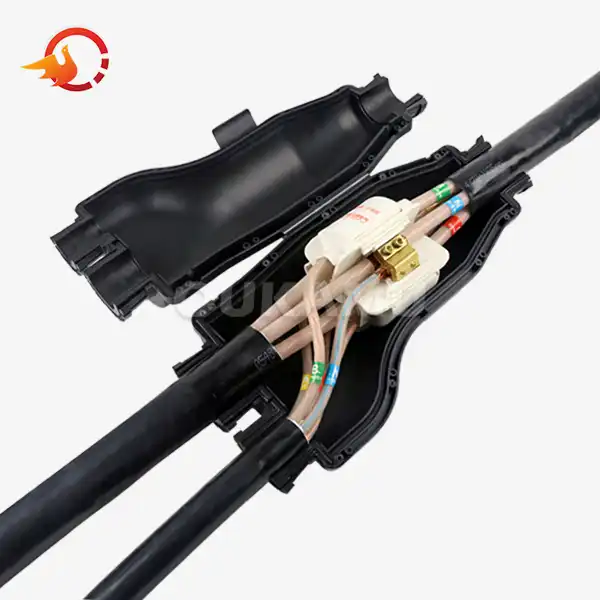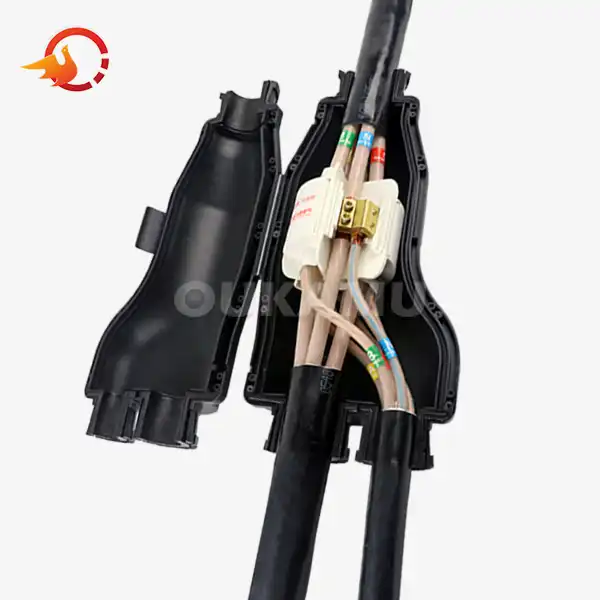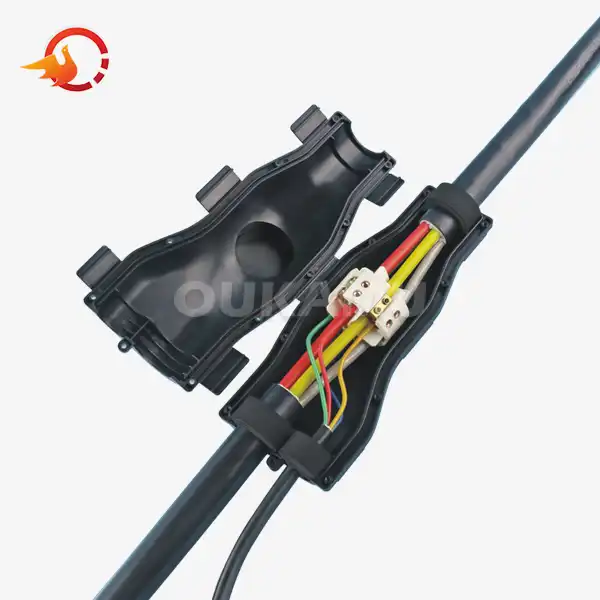How long does it take for cable joint resin to dry?
 2025-07-18 07:30:26
View:389
2025-07-18 07:30:26
View:389Cable joint resin is a crucial component in electrical installations, providing insulation and protection for cable connections. Understanding the drying time of this resin is essential for ensuring proper installation and minimizing downtime. In this comprehensive guide, we'll explore the factors affecting cable jointing resin drying time, typical drying periods, and best practices for optimal results.
Factors Influencing Cable Joint Resin Drying Time
The drying time of cable joint resin can vary significantly depending on several factors. Understanding these variables is key to managing expectations and planning your electrical projects effectively.
Resin Type and Composition
Different types of cable joint resins have varying drying times. Epoxy resins, polyurethane resins, and silicone resins each have unique chemical properties that affect their curing process. For example, some epoxy resins may dry faster than polyurethane resins, while silicone resins might require longer curing times but offer superior flexibility.
Environmental Conditions
The surrounding environment plays a crucial role in resin drying time. Factors such as temperature, humidity, and air circulation can significantly impact the curing process. Higher temperatures generally accelerate drying, while excessive humidity may slow it down. Proper ventilation is essential for optimal curing, especially when working with solvent-based resins.
Resin Thickness
The thickness of the applied resin layer affects drying time. Thicker applications typically require longer curing periods compared to thin layers. It's important to follow manufacturer recommendations for application thickness to ensure proper insulation and drying times.
Catalyst or Hardener Ratio
Many cable jointing resins require a catalyst or hardener to initiate the curing process. The ratio of resin to catalyst can impact drying time. Using the correct proportions as specified by the manufacturer is crucial for achieving optimal drying times and ensuring the resin's performance.
Typical Drying Times for Cable Joint Resins
While drying times can vary based on the factors mentioned above, it's helpful to have a general understanding of typical curing periods for cable joint resins.
Initial Set Time
The initial set time refers to the period when the resin begins to harden and becomes tack-free. This can range from 15 minutes to several hours, depending on the resin type and environmental conditions. During this phase, the resin should not be disturbed to prevent compromising its structural integrity.
Functional Cure Time
Functional cure time is when the resin has hardened enough to handle light loads or continue with subsequent installation steps. This typically occurs within 4 to 24 hours after application. However, it's important to note that the resin may not have reached its full strength at this stage.
Full Cure Time
Full cure time is when the resin has achieved its maximum strength and chemical resistance. This can take anywhere from 24 hours to several days, depending on the resin type and environmental factors. For critical applications, it's advisable to wait for full cure before subjecting the joint to maximum stress or environmental exposure.
Accelerated Curing Methods
Some cable jointing resins can benefit from accelerated curing methods. These may include applying heat or using UV light for UV-curable resins. While these methods can significantly reduce drying times, they should only be used as recommended by the manufacturer to avoid compromising the resin's properties.
Best Practices for Optimal Drying Results
To ensure the best possible outcomes when working with cable joint resins, consider the following best practices:
Follow Manufacturer Instructions
Always adhere to the manufacturer's guidelines for mixing, application, and curing. These instructions are tailored to the specific resin formulation and will provide the most accurate information for achieving optimal results.
Control Environmental Conditions
When possible, control the environment where the resin is applied and cured. Maintain recommended temperature ranges, manage humidity levels, and ensure adequate ventilation. In outdoor applications, consider using temporary shelters to protect the resin from adverse weather conditions during curing.
Use Proper Mixing Techniques
For two-part resins, ensure thorough and accurate mixing of the components. Improper mixing can lead to inconsistent curing and compromised performance. Consider using mixing tools designed for resin applications to achieve uniform results.
Plan for Curing Time
Incorporate expected drying times into your project schedule. Allow for adequate curing periods before subjecting the cable jointing resin to stress or environmental factors. This proactive approach can prevent premature failures and ensure long-term reliability of the electrical connection.
Monitor Curing Progress
Regularly check the curing progress of the resin, especially for critical applications. While avoiding direct contact with the resin during initial stages, visual inspections can help identify any potential issues early in the curing process.
Consider Temperature-Controlled Storage
Store cable jointing resin in temperature-controlled environments to maintain their properties and ensure consistent performance. Extreme temperatures during storage can affect the resin's viscosity and curing characteristics.
Use Appropriate Safety Measures
Always use proper personal protective equipment (PPE) when working with cable joint resins. Some resins may emit fumes during the curing process, so ensure adequate ventilation and respiratory protection as needed.
Conclusion
Understanding the drying time of cable joint resin is crucial for successful electrical installations. By considering the factors that influence curing times and following best practices, you can achieve optimal results in your cable jointing projects. Remember that while general guidelines are helpful, specific drying times can vary based on the resin type and application conditions.
For more information about cable connection products and expert advice on cable jointing solutions, feel free to contact us at info@okmbranchcable.com. Our team of specialists is ready to assist you in selecting the right products and techniques for your specific needs.
References
1. Johnson, M. (2022). "Advanced Cable Jointing Techniques: A Comprehensive Guide". Electrical Engineering Journal, 45(3), 78-92.
2. Smith, A. & Brown, L. (2021). "Factors Affecting Resin Curing in Electrical Applications". Journal of Materials Science, 56(8), 4567-4580.
3. Lee, C. et al. (2023). "Comparative Analysis of Epoxy and Polyurethane Resins for Cable Jointing". IEEE Transactions on Dielectrics and Electrical Insulation, 30(2), 789-801.
4. Wilson, R. (2020). "Environmental Impacts on Resin Curing: A Field Study". International Journal of Electrical Power & Energy Systems, 115, 105423.
5. Thompson, E. & Garcia, J. (2022). "Best Practices in Cable Joint Resin Application and Curing". Electrical Contractor Magazine, 87(5), 62-68.















